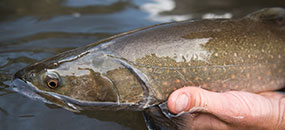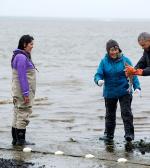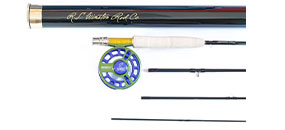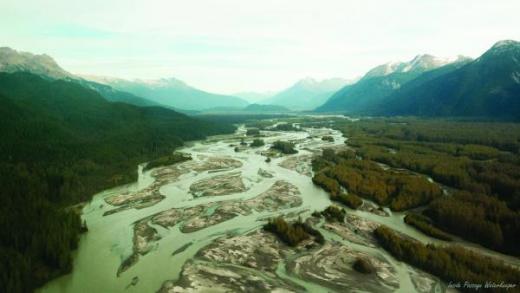(Iskut River near the confluence with the Stikine River. Photo courtesy of Inside Passage Waterkeeper.)
The British Columbia government today allowed Mount Polley mine to reopen, provoking concern from fishermen, tribes, tourism operators and others in neighboring Southeast Alaska. Mount Polley, in southcentral B.C., suffered a catastrophic tailings dam breach last August, unleashing 6.6 billion gallons of toxic waste including arsenic, lead, and nickel into salmon-producing lakes and streams of the Fraser River watershed. The accident was Canada's worst mining disaster ever.
The owner's of Mount Polley last month opened a new mine, Red Chris, in the headwaters of the Stikine River, a transboundary salmon river that flows from B.C. into Southeast Alaska and waters surrounding the Tongass National Forest. Red Chris is bigger than Mount Polley, has greater potential to release acid mine waste, and is subject to the same failed standards of design and oversight in place when the Mount Polley dam collapsed, said Heather Hardcastle of Trout Unlimited and Salmon Beyond Borders.
"TU and Salmon Beyond Borders stand with the many individuals and communities whose livelihoods and reliance on clean water and salmon were disrupted by the Mount Polley disaster. We are working to prevent a similar catastrophe from tainting out waters and damaging our fisheries in Alaska. We feel strongly that rather than allowing this risky mine to restart, British Columbia should apply lessons learned from this catastrophe and stop permitting mines with watered tailings dams," said Hardcastle, a commercial gillnetter who fishes in the transboundary Taku River.
(Photo of Heather Hardcastle courtesy of Taku River Reds.)
Meanwhile, a new reporting series about British Columbia’s aggressive mine developments along Southeast Alaska’s border launched this week. The series, by writer Judith LaVoie, is published in the award-winning online news site, DeSmog Canada.
LaVoie, who traveled to Alaska in May to report the series, finds that Alaskans are increasingly alarmed by the modern-day Gold Rush taking place in sensitive, salmon-bearing watersheds that begin in B.C. and flow into Alaska. She writes that Alaskans increasingly see Canada as having a poor track record as far as mining and environmental protection, most recently illustrated by the Mount Polley disaster.
Trout Unlimited’s Alaska Program is working with Alaska lawmakers, tribes, fishing organizations, municipalities, and conservation groups to sound the alarm over B.C.’s push to approve mines in the headwaters of transboundary salmon rivers, including the Stikine, Taku and Unuk, which run from B.C. into Alaska. As LaVoie writes, “tensions are running so high the groups are asking the International Joint Commission, designed to resolve Canada/U.S. water problems, to step in."
Lavoie’s series will be published every Wednesday throughout the summer. Read the first installment here.







